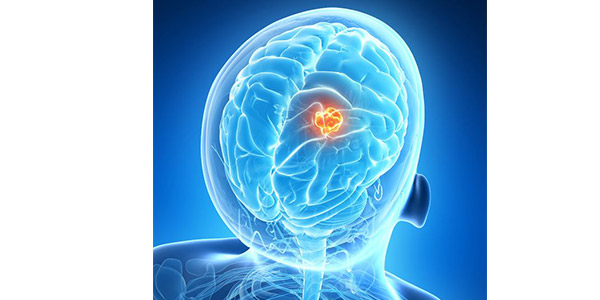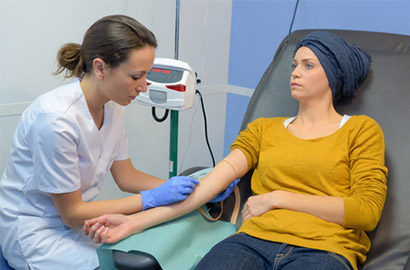Glioblastoma, Glioblastoma Multiforme (GBM) or glioma grade 4, is part of the family of gliomas, brain tumors that affect glial cells.
These cells represent half of the cerebral volume and form the environment around neurons, with a role of supportting and protecting the nervous tissue.
Glioblastoma is the most common and most aggressive brain tumor. With an incidence of 2 to 5 cases per 100,000 people in North America and Europe, it accounts for more than 50% of primary malignant brain tumors but still remains a rare disease. The number of new cases of glioblastomas per year can thus be estimated at around 250,000 worldwide, with an over-incidence in the Caucasian populations and a slight increase anticipated in the years to come due to the aging of the population. It is also the most aggressive brain tumor with a median survival of fourteen to sixteen months and a five-year overall survival rate of less than 10% with the current standard of care. About 200,000 people die each year from a glioblastoma in the world, including nearly 15,000 in Europe and 9,000 in the United States.
The current therapeutic arsenal is therefore strongly criticized by clinicians specializing in the disease (neurosurgeons, neuro-oncologists and radiotherapists) due to the low efficacy of the products authorized for this indication. In this respect, the medical need is particularly strong for a local treatment that can be administred during concomitant surgery, without waiting for the beginning of the radiotherapy which takes place between four to six weeks after the resection of the tumor.

The current standard of care for glioblastoma consists of resection of the maximum amount of tumor (surgery is possible in 50% to 70% of patients, depending on the geographical area), or a simple biopsy (for the non-resecable tumors), with the possible addition of a local chemotherapy treatment in the United States and Japan (carmustine implant: Gliadel® wafer from Eisai / Arbor), followed by the implementation of the "Stupp protocol": radiotherapy followed by adjuvant chemotherapy - Temozolomide (Temodal® from Merck) for six months. The efficacy of this first-line treatment varies according to the biological status of the patients for the EGFRvIII and MGMT genes, their age, and their general condition, however on average it allows a survival gain of a little more than one year, because it unfortunately does not prevent the almost systematic relapse.
Second-line treatments are more variable. While second resections are rare, except in the United States, second line chemotherapy is often prescribed using a cytostatic product of the nutro-urea family, such as Lomustine (BMS / Prostrakan) or Carmustine (BMS BiCNU®), in combination with the anti-angiogenic bevacizumab (Roche's Avastin®). This second-line treatment allows a better life without symptoms but does not significantly improve overall survival time.



Beyond these already commercialized treatments, patients can benefit from promising experimental treatments in clinical trials.




